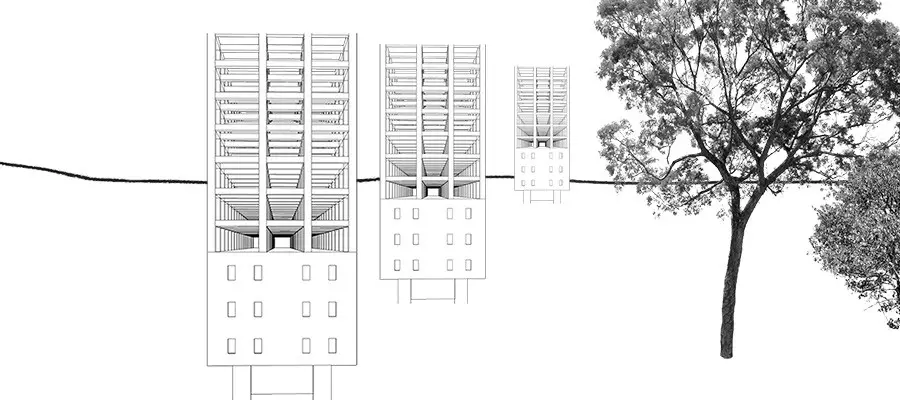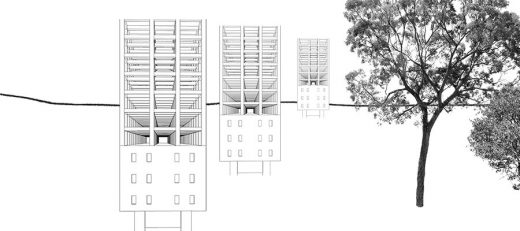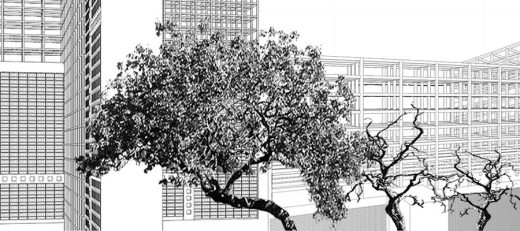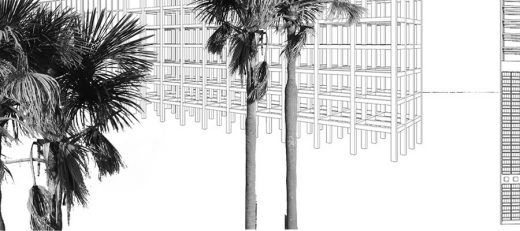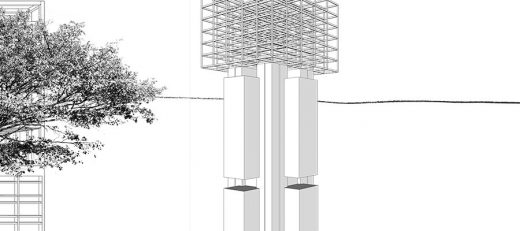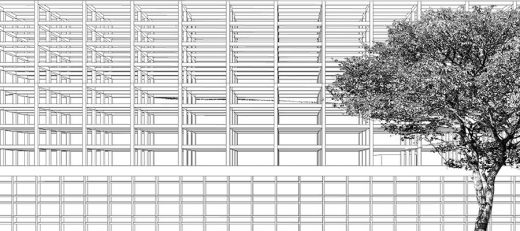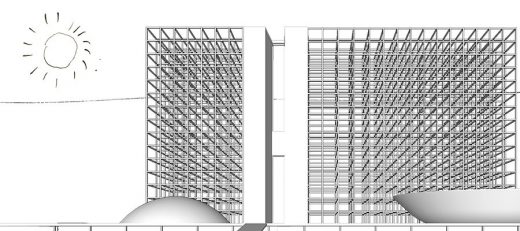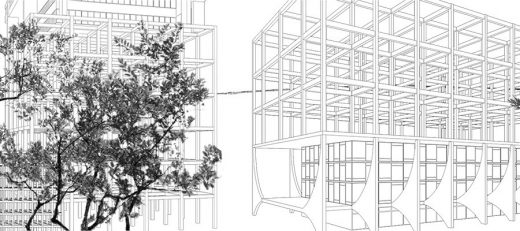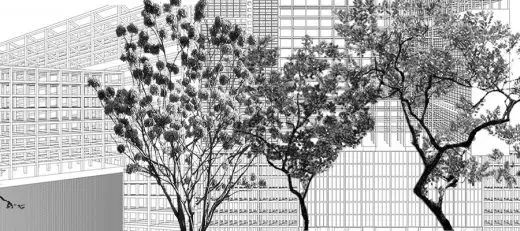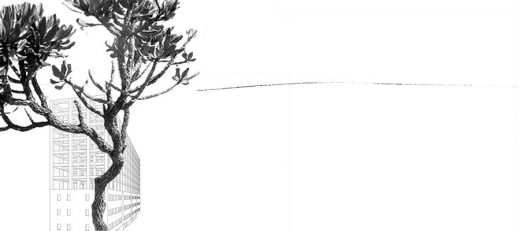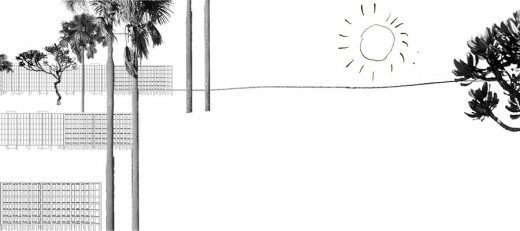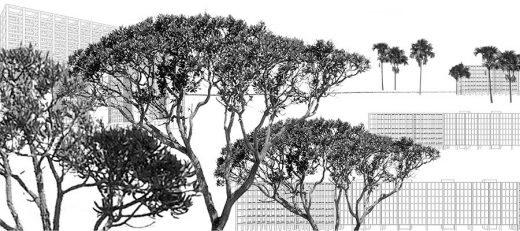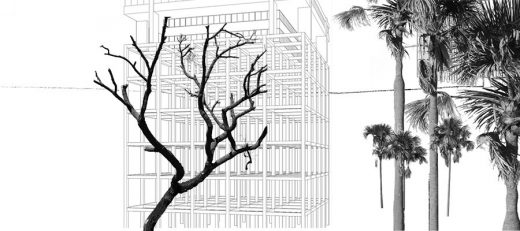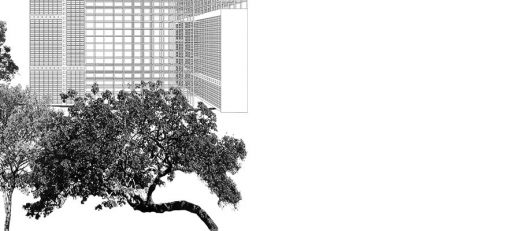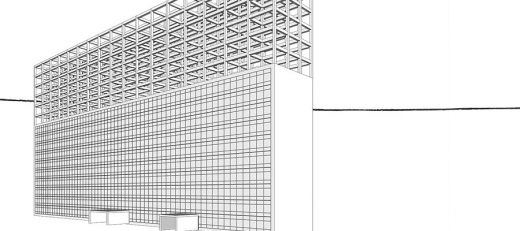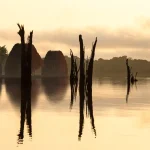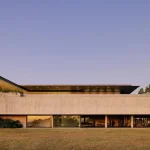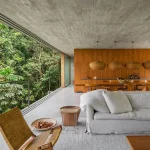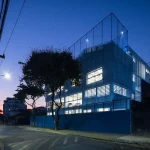Brasília Cerrado, cidade e natureza, paisagismo urbano, cerrado, vazios e sólidos, ecologia urbana, Moisei Ginzburg, Architecture
Brasília, Cerrado-city
19 July 2021
Location: Brasília, Brasil, South America
Brasília, Cerrado-city by Carlos M Teixeira architect
Resume
E se Brasília fosse retomada pelo Cerrado que ela destruiu? Esse artigo descreve uma capital imaginária agora integrada neste bioma. Pois Brasília não tomou posse do Planalto Central: este é que está, sub-repticiamente, recuperando um território perdido.
What if Brasília was taken over by the Cerrado that it once destroyed? This article describes an imaginary capital now integrated into this biome. Because Brasilia did not take possession of the Central Plateau: in fact, the biome is trickily recovering an apparently lost territory.
¿Qué pasa si Brasilia fue tomada por el Cerrado que la destruyó? Este artículo describe una capital imaginaria ahora integrada en este bioma. Pues Brasilia no tomó posesión del Planalto Central: él está, subrepticiamente, recuperando un territorio aparentemente perdido.
Brasilia, Cerrado-city, Brazil
Sinopse
Carlos M Teixeira é arquiteto pela Escola de Arquitetura da UFMG (Belo Horizonte), mestre em urbanismo pela Architectural Association (Londres) e doutorando pela FAUP (Porto). Publicou os livros “Em obras: história do vazio em BH” (Cosac Naify, 1999) e “Ode ao Vazio” (Romano Guerra / Nhamérica, 2017), e é sócio do escritório Vazio S/A.
Carlos M Teixeira is an architect at the School of Architecture / UFMG (Belo Horizonte), a master in urbanism at the Architectural Association (London) and a PhD student at FAUP (Porto). He published the books “Under construction: history of the void in BH” (Cosac Naify, 1999) and “Ode to the void” (Romano Guerra / Nhamérica, 2017), and is a partner at Vazio S/A.
Carlos M Teixeira es arquitecto por la Escuela de Arquitectura de la UFMG (Belo Horizonte), maestro en urbanismo por la Architectural Association (Londres) y estudiante de doctorado de la FAUP (Oporto). Publicó los libros “Em obras: história do vazio em BH” (Cosac Naify, 1999) y “Ode ao vazio” (Romano Guerra / Nhamérica, 2017), y es socio de Vazio S/A.
Brasília, cidade-Cerrado
Author: Carlos M Teixeira
Brasília, Cerrado-city, Brasil
The natural landscape around Brasília is the Cerrado, the tropical savanna that covers much of the country’s midlands and harbors some typological similarities with the scruffy vacant lots, brakes and thickets of large cities. The Cerrado is the wild grasses of Brasília and its environs, mixed with creeping weeds, sedges and rushes that invade the sidewalks and plague kept lawns (in this strict sense, Cerrado = urban grass). And just like weeds are detested in the urban environment, the Cerrado is considered the runt of Brazil’s biomes, and is the one extended the fewest legal protections.
Range | The second-largest landscape formation in Brazil, the Cerrado is one of its seven biomes, covering an area of approximately 1.5 million km2 (22% of the national territory). Though concentrated on the Central Tableland, especially the states of Minas Gerais, Goiás, Mato Grosso, Mato Grosso do Sul and Tocantins, the Cerrado stretches north to Amapá and as far south as Paraná. The biome is home to a third of Brazil’s biodiversity, 5% of the world’s flora and fauna, and the headwaters that supply the country’s three major catchment basins (Araguaia/Tocantins, São Francisco and Paraná/Paraguai). It’s flora is unique, with well-dispersed trees and shrubs coexisting with dense grass and brush cover, producing a South-American version of the African savannah. As it transitions into all of Brazil’s other ecosystems, geopolitical regions and territories, the Cerrado is an agent of national integration. The balance of this ecosystem, surpassed only by the Amazon in terms of biodiversity, is of fundamental importance to the stability of all other Brazilian biomes.
Why Cerrado? | The appearance of the Cerrado’s characteristic plant formations is explained:[1]
- By pedological theories: according to which the vegetation is seen as dependent on edaphic and geological aspects, such as mineral deficiencies, soil saturation by elements like aluminum, differences in drainage and soil depth;
- By climate theories: according to which Cerrado vegetation is the result of climate, especially the seasonal water shortages during the dry period; and
- By biotic theories: for which Cerrado vegetation is a response to human action, chiefly our frequent use of fire, and the impact of other elements in the biota, such as ants.
Flora | The Cerrado can display different sorts of vegetation depending on the amount of water available, the regime and degree of fire-use, and the prevailing soil type. As such, the biome can present itself under numerous guises: park savanna, wooded savanna, Cerrado proper, “Cerradão”, or wild grasslands, and even gallery forest. Park savanna is dominated by gramineous plants, while the woodier variants escalate into shrubs and bushes. Cerrado proper is sparsely wooded grassland, while Cerradão denotes thick brush. Gallery forest is found along the banks of streams and usually consists of evergreen species, some of which can be quite tall.
The Cerrada is home to a rich flora. The order that predominates on the woody stratum is the Fabaceae (Leguminosae), while the herbaceous stratum is dominated by the Poaceae (Gramineae) and Composites. There are thought to be 10 thousand different species in the Cerrado, many of which are used to produce cork, fibers and oils, as a material in arts and crafts, and in several foods and medicines. The trees have taproots that can burrow as deep as 12 meters underground to reach the water table—affording a constant water supply even during drought. Another characteristic is deciduousness, or leaf-loss, a strategy that enables plants to economize on water being lost through leaf transpiration during dry periods. The most robust specimens tend to be medium sized (3 to 6 meters tall), with gnarled and twisted trunk and branches, pre-historically thick bark and coriaceous leaves.
The twisted aspect of Cerrado tree branches is explained by the “burning of the apical meristem”. All Cerrado plants have an apical meristem (growth zone) and secondary meristems that remain inactive unless the apical meristem is shorn or irremediably damaged. When the apical meristem is burned, as often occurs in the region, secondary meristems are activated and growth resumes in another direction. The fire explanation is further strengthened by the fact that some seeds only germinate after being burned—a sort of vaccination against fire. Another strong indicator is the thickness of the tree bark, which functions as a species of fire-resistant cladding.[2]
Pyrolandscaping | If the Cerrado’s trees are gnarled by fire, then what we have is a flora defined by its capacity to adapt to fire and avoid destruction by it. A “pyrolandscape” formed by two different types of pyrovegetation: the passive pyrophytes, or species that adopt strategies to resist destruction by fire (twisted trees); and active pyrophytes, consisting of species that depend on fire to thrive and regenerate (the graminaceous plants).[3]
Scrubland | As a tropical savanna seen by most as a poor biome and convenient spillover for farmland, the Cerrado receives little legal protection. Unlike the Atlantic Forest, Amazon Rainforest, and Pantanal wetlands, the Cerrado is not listed as Natural Heritage in the Federal Constitution, despite being one of the 25 most biodiverse regions on the planet, and the most biodiverse savanna in existence. Only 1.7% of its total area enjoys strict-use protected area status. And, just as urban weeds and grasses are ignored, the Cerrado is seen as a wasteland ripe for new, territorial-scale undertakings. Back in the Seventies, the Midwest, most of which lies within the Cerrado, produced roughly 6% of Brazil’s soya. Today, it produces around half. Livestock farming in the Midwest has grown exponentially and currently accounts for a third of Brazil’s cattle herds and a fifth of its swine. This livestock expansion is one of the main pressures on the Cerrado today. Recent studies by Embrapa, the Brazilian Agricultural Research Corporation, found that under 5% of the Cerrado remains in viable fragments—swaths of over 2,000 hectares capable of sustaining the biome’s reproductive chains. If we add smaller pockets, the total amount of preserved Cerrado reaches no more than 20%.
Lúcio Costa | Inspired by the parks of England, where he spent his childhood, Lúcio Costa, author of Brasília’s Pilot Plan, considered lawns one of the most important ingredients in the capital’s urbanist concept. Essentially, Brasília is an axis of key public buildings and residential super blocks, joined by a road system capable of functioning without the need for intersections. And all of this is girded by gardens and parks designed according to “landscaping techniques”.
However, for Costa, Brasília was not a Cerrado-city, but a city consisting of an artificial/natural landscape blend: “Normally, urbanization means creating the conditions for a city to happen. But in Brasília it meant taking the place—in the manner of the Conquistadores or Louis XV—and imposing upon it an urban structure capable of receiving, over the short term, the installation of a new Capital. Unlike cities that conform and adjust to the landscape, in the desert Cerrado, spread beneath an immense open sky, as if built upon the high seas, it was the city that created the landscape.”[4]
And yet, what happened was the opposite: the landscape created the city, and that is why I can safely say that Brasília is, first and foremost, a Cerrado-city (or, to create an even more sonorous definition, a Scrubland-city). It is undoubtedly the highest praise a Cerrado-built city could receive—never mind the various differences between the exotic trees of Brasília and the untouched Cerrado of the rest of Federal District.
Cerrado-city? There is very likely a Brasília mythology that remains to be told. The blue sky and red land will someday birth a new prose, a new ecology: those of the unending grasses. No monument, no exuberances. And yet, what is it that makes the Cerrado so fascinating? It must be the power of its sheer territorial expanse. The murmuring of its endangered immensity. The end of the heroic distinction between nature and culture. The unplanned clash between Brazilian architecture and the Central Tableland. The succession of rigid functions of modern urbanism (hotel sector, commercial sector, banking sector, etc.) corrupted by the free succession of thick-barked trees (stryphnodendrons, kielmeyeras, Machaerium villosum, etc.). The organic writhing of twisted trunks muddying the geometric curves of the vaults and the arches. The modern capital as incontrovertible proof that Brazil is not a modern country, but a place where nature still reigns with crushing ease. The negation of the nation’s baroque and colonial heritage and an ode to the primary vitality of the earth, not to mention the perfect expression of our culpability: after all, why isn’t Brasília a Cerrado-city?
Revenge | The artificial predominance of bahiagrass on the Ministerial Esplanade has its days numbered. Contrary to dear Lúcio’s wishes, there are no English lawns in Brasília: molasses-grass seeds hibernate, lying in wait, biding their time to exact revenge for their expulsion. The future belongs to the local species, not the exotic blow-ins the city’s gardening corps struggles to maintain.
Brasília’s defenders will argue that there is still some autochthonous vegetation to be found in the city, but they have been deceived by appearances. For example: the buriti palms that adorn the capital’s palaces did not grow there naturally. They were uprooted and transplanted in bulk, with one particularly impressive specimen being replanted in Buritis Square. It stands 20 meters tall, weighs 25 tons and is around 200 years old (the age was estimated from the rings in the verge trunk). In 1967, 51 buriti palms were dispatched to Itamarati Palace. In 1971, 47 were sent to the Urban Military Sector. In 1977, buritis that once stood in a grove in Goiás were uprooted and packed off to Brasília’s Recreational Park.[5] (One of the reasons for transplanting trees was the slow growth rate of Cerrado plants. A canela-de-ema [Vellozia squamata], for example, reaches reproductive maturity at the ripe old age of 1,000, and a purple threeawn, at 600. It takes a buriti palm half a millennium to reach a height of 30 meters. As the geographer Altair Barbosa said, the veredas [6]—which existed in abundance until recently—were made up of young plants when Pedro Álvares Cabral “discovered” Brazil in 1500. The palm trees that were just sprouting then now stand 25 or 30 meters tall.)
But, getting back to the the revenge of the native grasses: it’s not just a local matter. Consider, for example, the negative effect of grass in the United States, a country where almost every house sits in a well-tended lawn. This tradition began with the castles of the French and British aristocracy in the late middle ages, when it was seen (and still is) as a symbol of power, prestige and wealth. Some time later, with the model of the American suburb followed by the invention of automatic irrigation systems and the lawnmower, lawns became accessible to millions of families, to such an extent that they are now a fundamental element of the suburban paradise cultivated by the petit-bourgeoisie. A NASA study recently revealed that there are 63,000 square miles of garden lawns in the US, an area larger than the state of Georgia. Keeping all those lawns nice and green can take up 50 to 75% of a residence’s annual water consumption. American lawnmowers guzzle 17 million gallons of fuel each year and belch the fumes back into the atmosphere.Then there are the fertilizers and pesticides: garden-owners spend US$ 36 billion on these agrochemicals per annum, a sum 4.5 times the annual budget of the US Environmental Protection Agency.
A lawn of native grasses, on the other hand, provides habitat for birds and insects. Gramineous spreads are a natural carbon sink, extracting carbon dioxide from the air and storing it in their roots deep underground. In dry places, like southern California, there is no reason for there to be conventional lawns: in the light of recent droughts, Californian city halls have started offering homeowners incentives to replace their lawns with native vegetation.[7]
Biological Invasions | It sounds like the title of a disaster movie, but it’s actually an academic journal published since 1999 by the Swiss group Springer International Publishing. Biological Invasions runs countless papers on alien invasive species. Biotic Homogenization of the South American Cerrado, for instance, speaks of the invasion of the Cerrado and discusses how it might be contributing toward biotic homogenization. The Cerrado is slowly being overtaken by non-native species, whether through crops or pasture, while the native species are becoming increasingly endangered through habitat loss and the alkalization of the Cerrado’s acidic soils.
Figure v Background | As many critics of the modern city have noted, in the traditional baroque city, the houses are the background and the streets themselves, the foreground. Façades are a solid constructed mass that serves as background to squares and streets, both essentially public spaces. In Ouro Preto, for example, the voids are not infinite: they are foreground, and they have form, drawn by the surrounding buildings. Tiradentes Square, the city’s main public space, is a rectangle with four clearly delineated sides: at one end stands the Minas School, with the Municipal Assembly and Jailhouse at the other, with terraces of two-story townhouses running between them on either side. It’s a convention of the traditional city that can be schematized as solid=background, void=foreground. The contiguous blocks (solids) hedge an environment (void); the everyday structures define the public spaces.
The modern city inverted this convention in a radical manner: each building was to be a highlight. Rather than compose a continuous, homogeneous background fabric, modern buildings are objectual, made for the importance of a monument. Where before, as in Ouro Preto, façades were continuous and the voids, discontinuous and hemmed, now the voids are continuous backdrop and the buildings themselves the delimited foreground figures. The buildings of today have four sides, each equally important, and are made to be viewed from multiple angles, while the anonymous buildings of Ouro Preto have only one main façade. Every modern building aspires to monumentality, as an island in a sea of greenery; each unit in the superblocks of Brasília, for example, is supposed to be seen against a neutral backdrop.[8]
But the city made of isolated objects in rambling voids, of disperse bodies that, in principle, translate a fair and enlightened, free and rational society is also the city of disorientations caused by repetition, the unbroken continuum without end or limit, the lack of references or urban landmarks that confuses even the longest-standing residents (and, obviously, it is also the city of inequality and injustice). Each block is sculptural, but this accumulation of objects generates what the anthropologist James Holsten called “sculptural anonymity” and “semantic impossibility”. Objects that say they define the space of the superblocks are actually only occupiers of space that delimit nothing at all. Perhaps that’s why the binomial is useless to Brasília, on one side, and to the Cerrado, on the other: we need to adopt a new foreground/background, nature/architecture strategy.
New Ecology | Are we standing before an opportunity to imagine a new urban ecology? A new way of seeing the city in which it and the territory blend indissociably into one-in-the-same landscape? Here, the background predominates and blurs the foreground; the air, the light, the vegetation, and the heat undo the architecture. The background to Brasília is a wild green that does not need to be tended behind fences, like the lawns of a conventional park. What we have is an unnameable middle ground: the vegetation here consists of those pesky grasses that grow unkempt in vacant urban lots, but it’s an urban extension of a natural domain that encompasses the nation’s second largest reserve of fauna and flora. A successful fusion of foreground/background that puts into practice what other modern cities pursue as their ultimate end—an end that is here attainable, because we’re smack in the middle of an inebriating asset: the Cerrado.
The greenery that lifts our spirits amidst all the dispiriting concrete blocks; the sea of space that battles back the arrogance of this urban undertaking; we have to speak of Brasília with innocence, waiting to trigger an as yet embryonic stratagem. A maneuver that calls for the coexistence of order and disorder, permanence and becoming, future and past, background/foreground and foreground/background.
However, discovering the torpor of the Cerrado should always be done with one caveat in mind: it is no longer virgin; its page is not entirely blank, but bears signs of prior use. The operation, the act of discovery, has to be contaminated, in advance, with the conflict between solids and voids, greens and magentas. Analogically, the iconoclastic work “Erased de Kooning Drawing” serves as a sort of parallel to the revelation of these voids. In 1953, the artist Robert Rauschenberg bought a drawing by fellow artist Willem de Kooning and, with the latter’s permission, erased the lines of the original drawing until only faint traces were left on the paper, thus “using the gesture to erase the gesture, the creative device employed anew to undo a set of meanings and replace it with another, devolving the aesthetic unity attained by a completed work to the primordial unity whence it came—the empty canvas or sheet of paper”.[9] Rauchenberg’s procedure erased De Kooning’s drawing, but left its indelible mark, as it were, on the paper.
The critic José Miguel Wisnik has said: “The backlands self-destruct, inviolable — because, for better or worse, something of it always remains, the irreducible and rebellious substrate of all its reboundings—, always growing back, because nothing is capable of scything it away (and its chopped trees are living proof).”[10]
The backlands are inviolable, but not everyone sees them that way. When he drew up the axes of his Pilot Plan, Lúcio Costa made a proclamation worthy of a conquistador: “The gesture of one who is staking claim: two axes crossed at right angles.” But no, Brasília staked no claim over the Central Tableland: it is what it is, where it is, cunningly, reclaiming a territory thought lost. There must lie a red and acidic soil underneath all that tarmac (sous les pavés, la terre!); there must be signs of the Cerrado’s persistence in Brasília and Brasília’s insistence in the Cerrado. Just like Brazil’s conservative modernity consists of two layers—the archaic and the new—always superposed and never peeled apart.
The other, the same : So have the backlands become the nation’s capital? Yes, if we opt for the persuasiveness of absurdity. “This constructive and destructive power, which takes over the space, blind to the biomass it clears away, is still and forever the backlands, the other and the same, its double”.[11] The same backlands of which the sociologist Gilberto Freyre said, back in 1968: “as a new city, Brasília should not be considered a pure architectural problem, nor even a problem of urbanism, but of ecology. Of tropical ecology in all its complexity.” He went further: “(…) I blame Juscelino Kubitschek, who should have invited ecologists and social scientists to provide some check and balance to the flights of fancy of his team of artists from other fields and practices.”[12]
Rio | Seen from inside the buildings of his Contemporary City, what are the gardens designed by Le Corbusier? Part of his plan to “free up the center” and spread the greenery citywide. But also an essential aspect of the modern city: endowing it with vast neutral lawns as the backdrop to an architecture that was always intended as foreground figure. A tamed and homogeneous product of landscaping.
“Sun, space, verdure: essential joys. Through the four seasons stand the trees, friends of man. Great blocks of dwellings run through the town. What does that matter? They are behind the screen of trees. Nature is entered into the lease.”[13]
But now they are shaking off that neutrality in favor of a verdant virulence, encroaching on the courts and patios in an irrational shift that rebuffs the modern discourse. How can the city of Rio de Janeiro be conquered by an army of ornamental plants, as arrowheads, Swiss cheese plants, devil’s ivy and lacy trees unleash a sneaky ambush, creeping from their concrete window boxes to seize the sidewalks, clamber up the tree trunks and overrun the flower beds as a raiding plague. That’s the difference between Rio and other cities: here, the plan, like a Benign Tumor[14], is no environmentalist delirium, but just another element in a surreal reality. And even if it’s confined, for now, to the South Zone, it may be just biding its time before expanding into downtown and the North Zone too.
Moisei Ginzburg, or the conflictual clash of magenta and green | It was Moisei Ginzburg, architect and theorist of Soviet constructivism, who proposed an even more radical strategy for Moscow in his Green City project: the capital was to be gradually transformed, naturally and entropically dissolved.
According to the call for entries to an architecture competition organized by the government of the USSR in 1930, the Green City was initially to be a holiday resort with capacity for one hundred thousand vacationers at a time connected to Moscow by an existing railroad. But Ginzburg’s design was more ambitious than that, and went much further, transforming Moscow itself into one big park. To work this transformation, he proposed three strategic measures: relocate institutional buildings, relocate the Moscovite population to areas adjacent to highways out of the capital, and, most radical of all, ban all new constructions inside Moscow.
The idea was to let the buildings be overgrown by the grasses of the Russian steppe, allow the city to be transformed by entropy, erasing all trace of the counterrevolutionary presence. (Moscow would be an urban manifesto of the Second Law of Thermodynamics, after the description by the author Isaac Asimov: “We have to work hard to straighten a room, but left to itself, it becomes a mess again very quickly and very easily. Even if we never enter it, it becomes dusty and musty. How difficult to maintain houses, and machinery, and our own bodies in perfect working order; how easy to let them deteriorate. In fact, all we have to do is nothing, and everything deteriorates, collapses, breaks down, wears out, all by itself—and that is what the Second Law is all about.”[15]
But, getting back to Ginzburg, he proposed disurbanizing the traditional city, letting the capitalist city fall to rot while suburbanizing the entire Soviet Union. The buildings symbolic of Czarism would not be artificially preserved: from the very moment they were considered dispensable, all heritage protection would be lifted. There would be no heritage institute at all, and the state would be unburdened of the obligation to simulate life in dead buildings. These would be left to crumble and be swallowed up by returning nature. With time, Moscow would become a rambling park of overgrown lots, of palaces and old buildings in leafy ruin, with no pipes or pumps or prosthesis to keep them in shape. In other words, Moscow would become a mosaic of tones of green and magenta, where flurries of warm hues would meet islands of repose in verdant tracts. But this greenery would never be dull, thanks to violent eruptions—healthily disturbing infiltrations, if you will— of magenta. In the end, this vision of the “city turned inside out” would generate, not monotonous green, nor edgy magenta, but a blend of both: magenta + green = grey.
Ginsburg was under the influence of disurbanism, a doctrine that preached the end of the concept of the city as we know it. In 1930, the USSR was still a hotbed of extreme experiments, with various groups of artists and architects organizing themselves under competing revolutionary manifestos. The sociologist Mikhail Okhitovich was one of the intellectuals who proposed taking the socialist experiment down dangerously unprecedented roads. His disurbanism envisioned settlements scattered throughout the Soviet Union, with collective mess halls, recreational centers, and employment bureaus just off branches of highway, all vaguely reminiscent of Frank Lloyd Wright’s Broadacre City. Through a nationwide transport, energy and communications network, disurbanism would spread 42m2 single-family residences all across the country. The state would provide each individual with a light, pre-fabricated unit that could be coupled with other units as the person saw fit, and all interconnected by a mesh of roadways, railways and airports. Urban agglomerations in the form of cities would be eliminated in favor of low-density, self-sufficient settlements with 20, 50 or as few as 3 residents! And Moscow, relieved of its remit as a city, would be converted into a colossal park.[16]
A defender of the opposition of the exiled Leon Trotsky, Mikhail Okhitovich fell out with the Communist Party at the start of Stalin’s rise, and, having attacked the personality cult growing up around him, found himself rebuked by the Politburo for his intellectual and architectural output. His disurbanism was branded economically incapacitating, and he was arrested, sent to the Gulag and finally executed in 1937.[17]
Le Corbusier had once said that the modern city should be one big park, but his Contemporary City was not radical enough. He never cogitated a city-park the size of the world’s largest country or a Paris entirely left to the destructive forces of nature. And, for that, Ginsburg attacked his former idol, now scorned as a conformist and reactionary. Interested in designing projects in the USSR, the rising hope of a new society and new world, Corbusier responded to the threat posed by the disurbanists in a letter addressed to Ginzburg. The Russian replied as follows:
“My dear Le Corbusier,
(…) You, the best of surgeons of the contemporary city, you want to cure it by all means. This is why you elevate the city on poles wishing to solve the unsolvable problem of movement in a metropolis, a movement in the absence of space. You create magnificent gardens on the roofs of multi-story buildings wishing to give people an extra bit of greenery, you create charming villas, giving their inhabitants ideal conveniences, peace and comfort. But you create all that because you wish to cure the city, [you] attempt to essentially preserve it the way it was created by capitalism.
It happens that we, in the USSR, are in a more favorable position—we are not tied to the past. History confronts us with problems that require revolutionary solutions and, however insufficient our resources may be, we will solve them, come what may.
We diagnose the contemporary city. We say: yes, it is ill, mortally ill. But we do not want to cure it. We prefer to destroy it and want to start working on the creation of a new type of human settlement, which would be devoid of internal contradictions and which we could call socialist.”[18]
Identity | But we are not living in times anywhere as futurist as those that begot the modern city or even the Green City. On the contrary: ours is a time in which we are best advised to envision a future based on what we’ve already got and which considers the latent potential of the existing city, whatever that may be.
Since it was declared a UNESCO heritage site in 1987, everything in Brasília has conspired towards maintenance ipsis literis; towards a hands-tied rigidity and bureaucratization. Fossilized by nostalgia, its future is no longer contained in the Pilot Plan, but in the satellite towns founded by the demobbed construction workers who built it. So any chance of reinventing the Pilot Plan lies in its empty spaces: only there—in its greenery, not its concrete—can we imagine a potential landscape as a source of surprises and new identities. Or: the magenta as a sea of sameness formed by six-floor blocks; the green as freedom and future. Today, turning Brasília into a more diverse city means investing in what’s left to us to touch, the remaining pockets of potential for identification and differentiation: on one hand, landscape as expression in the superblocks; on the other, as a better future for the satellite cities. Out of the omnipresent Cerrado surges a new metropolitan region with more variations and fewer inequalities.
This proposal is not entirely contrary to Lúcio Costa’s ideas on urban landscape. In fact, it confirms some of them: the superblocks, for Costa, were to be “framed by a large, thick belt of trees, large trees, with different species dominating in each block, rising out of lawns behind an intermittent curtain of shrubbery and foliage, literally hedging the blocks from view at any angle, shunting them into a background buffered by landscape. There is a dual advantage to this, insofar as it guarantees a certain urbanist uniformity regardless of the density, category, standard or architectural quality of its buildings (…)”[19].
Heritage Protection In the end, what UNESCO listing did was freeze a city that is more scrubland than town and which has such vast voids that they might even be more interesting with a few more constructions in them. Ironically, urban ecologists, potential allies of a Green Pilot Plan, disapprove of it. Being declared a heritage protection site perpetuated Brasília as an economically inviable, socially unjust and ecologically unsustainable city: its mono-functional zones and the large distances between every this and that are the image of a city that is inhospitable to the pedestrian, to street life, to mixed uses, to the act of walking and to any viable public transport (not to mention the gaping inequalities between the Pilot Plan and the satellite towns). For the urban ecologists, the efficient cities are those that are dense and compact and manage to maximize public and private investments through their capacity to generate their own resources, essential to maintaining their ongoing and sustainable development. Brasília, the federal capital and symbol of the nation, is thus a benchmark of Brazilian inefficiency—a characteristic that has a positive side to it, all the same. So Brasília is an anti-modern city: if modernity means function, rationality and therapeutic quality. Brasília is all pomp, excess and waste; all caused by modern zoning and those intermittent sprawls of void.
But the city is not alone in this double-edged fiasco. It is trust in technique—in a technique of poetic dimensions—, created as if out of momentary spasms and convulsions that then relax back into their primitive state. As the art critic Ronaldo Brito said in Contra o Culto da Ignorância, “We desire a ‘natural order’—let thought return to it as fast as it possibly can—(…) To the problems of thought, [we, Brazilians] apply nature. To those of nature, we apply thought. All our trust in technique seems to rest, secretly, on our belief in nature—after all, she is Amazonian, prodigious and inexhaustible. Our symbolism responds to technique in a very simple way—it tries to mythologize it, turn it, one way or another, into magic.”
All we can do now is believe in this other capital, transforming it into a Cerrado-city before farming and livestock ranching can advance upon it and transform it in their image once and for all. As almost all of the Cerrado has been converted into soya plantations and pasture, the time has come for an absurd natural vengeance to strike environmentally and politically where it is least expected: in Brasília.
[1] “Guia do Cerrado”, Empresa das Artes: São Paulo, 2003
[2] “Ecossistemas: Cerrado”, in ONG VivaTerra, www.vivaterra.org.br, accessed on 03/2006
[3] According to a classification used by the landscaper Gilles Clément in “Paysages du feu”, https://www.botanique-jardins-paysages.com/102011-2/, accessed on 04/2019
[4] Lúcio Costa, “Registro de uma Vivência”, Rio de Janeiro, 1995
[5] Marta Adriana Bustos Romero, “A sustentabilidade do ambiente urbano da capital”. In: Brasília, controvérsias ambientais. Brasília: Editora Universidade de Brasília, 2003
[6] Veredas are “oases” of palm trees that grow among shrubs near headwaters or watercourses in the Cerrado.
[7] Eric Holthaus, “Get Rid of Your Lawn”, in Slate Magazine 06/05/2019, https://slate.com/technology/2019/05/lawns-are-bad-get-rid-of-them.html, acessado em 05/2019
[8] James Holston, “A Cidade Modernista”, Companhia das Letras: São Paulo, 1993, 126
[9] Paul Wood, “Arte Conceitual”, Cosac & Naify: São Paulo, 2002
[10] José Miguel Wisnik, “O famigerado”, Scripta, vol. 5/nº10: Belo Horizonte, 2002
[11] José Miguel Wisnik, “O famigerado”, Scripta, vol. 5/nº10: Belo Horizonte, 2002
[12] Gilberto Freyre, “Brasis, Brasil e Brasília”. Rio de Janeiro: Record, 1968
[13] Le Corbusier, “The Home of Man”, London, 1948. Cited in Collin Rowe, Fred Koetter, Collage city, MIT Press: Cambridge, 1984, p 51
[14] “If the history of Belo Horizonte is a film, it can be summarized as a transformation of a young town’s voids into the full spaces of a saturated city. This project is a scene from this film watched in fast-rewind, as on a VCR: it’s a regression through history that, paradoxically, reveals the city’s best futures.
We recapitulate the entire history of BH in a matter of minutes, just to make the absurd occupation of its voids all the clearer. If this city’s “progress” is identified with the gradual occupation of its lots, parks and greenery, the retrocession consists in emptying out the fullness and reinstating the emptiness and removed nature. Uncluttering the center, efficiently filling out and interconnecting the outskirts, imagining projects every bit as a delirious as was the densification of Belo Horizonte in the first place. Returning, that is, to the origins of the city, imagining once more the liberty and power of its voids. We watch the urban zone as it becomes a huge Municipal Park, in an act of ‘urbanist vengeance’.
Like an enormous Central Park—at once the negation and exaltation of the city—, the urban zone will be handed over to the nature that belongs to it: the nature of things that eschew the artificiality of architecture. The revenge: the inverse metastasizing of that which characterized the city’s growth. A benign tumor. A stain of voids contaminated by fullnesses. A regression: a return to the beginning of history as a way of envisioning a healthier future.” In Carlos M Teixeira, “História do vazio em Belo Horizonte. São Paulo: Cosac Naify, 1999.
[15] Isaac Asimov, “In the Game of Energy and Thermodynamics You Can’t Even Break Even”, Smithsonian Institution Journal (June 1970), p.6
[16] Fosco Lucarelli, “Mikhail Okhitovich and Disurbanism”, in http://socks-studio.com/2012/07/14/mikhail-okhitovich-and-the-disurbanism/, accessed on 02/2019
[17] Idem.
[18] Alla Vronskaya, “The utopia of personality: Moisei Ginsburg project for the Moscow’s park of culture and leisure”, in Problema voluminis 4.
[19] Lúcio Costa, “Plano Piloto de Brasília”, Módulo Arquitetura Ltda, s/data. Another reference on the importance of integration with the landscape in Costa’s work is the description of his preliminary design for the Monlevade Workers’ Villa (1934), which was structured along three main principles, the third of which was, “in the interests of the program itself, to cause as little damage as possible to the natural beauty of the place.”
Brasília Cerrado-city by Carlos M Teixeira images / information received 190721
Architect Carlos Teixeira works for Vazio Arquitetura in Brasil
Location: Brasília, DF, Brazil
Architecture in Brazil
Brazilian Architectural Projects
Brazilian Architecture Design – chronological list
Brasilia Buildings
Casa Clara
Architects: 1:1 arquitetura:design
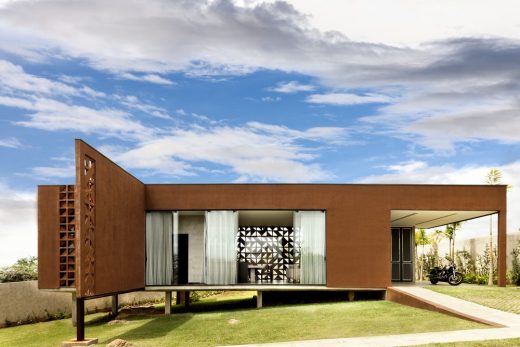
photograph : Edgard Cesar
Casa Clara in Brasilia
Brasilia Stadium : World Cup Venue
Design: gmp
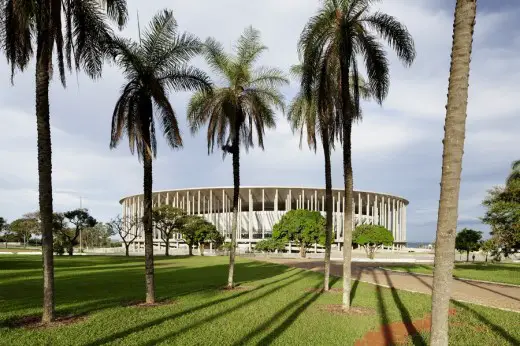
photograph : Marcus Bredt
Brasilia Stadium Building
Osler House
Design: Marcio Kogan Arquitetos
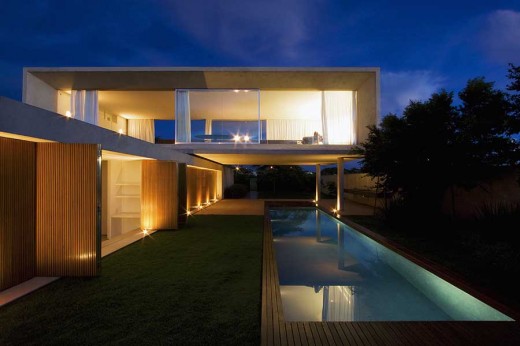
photograph : Pedro Vannucchi
Brasilia Property
Byte Building Brasilia
Design: DOMO Arquitetos Associados
Byte Building in Brasilia
Mané Garrincha Stadium Brasília, World Cup Venue
Temporary art gallery
Design: DOMO Arquitetos Associados
Patchwork Pavilion Brasilia Building
Comments / photos for the Brasília Cerrado-city by Carlos M Teixeira page welcome

